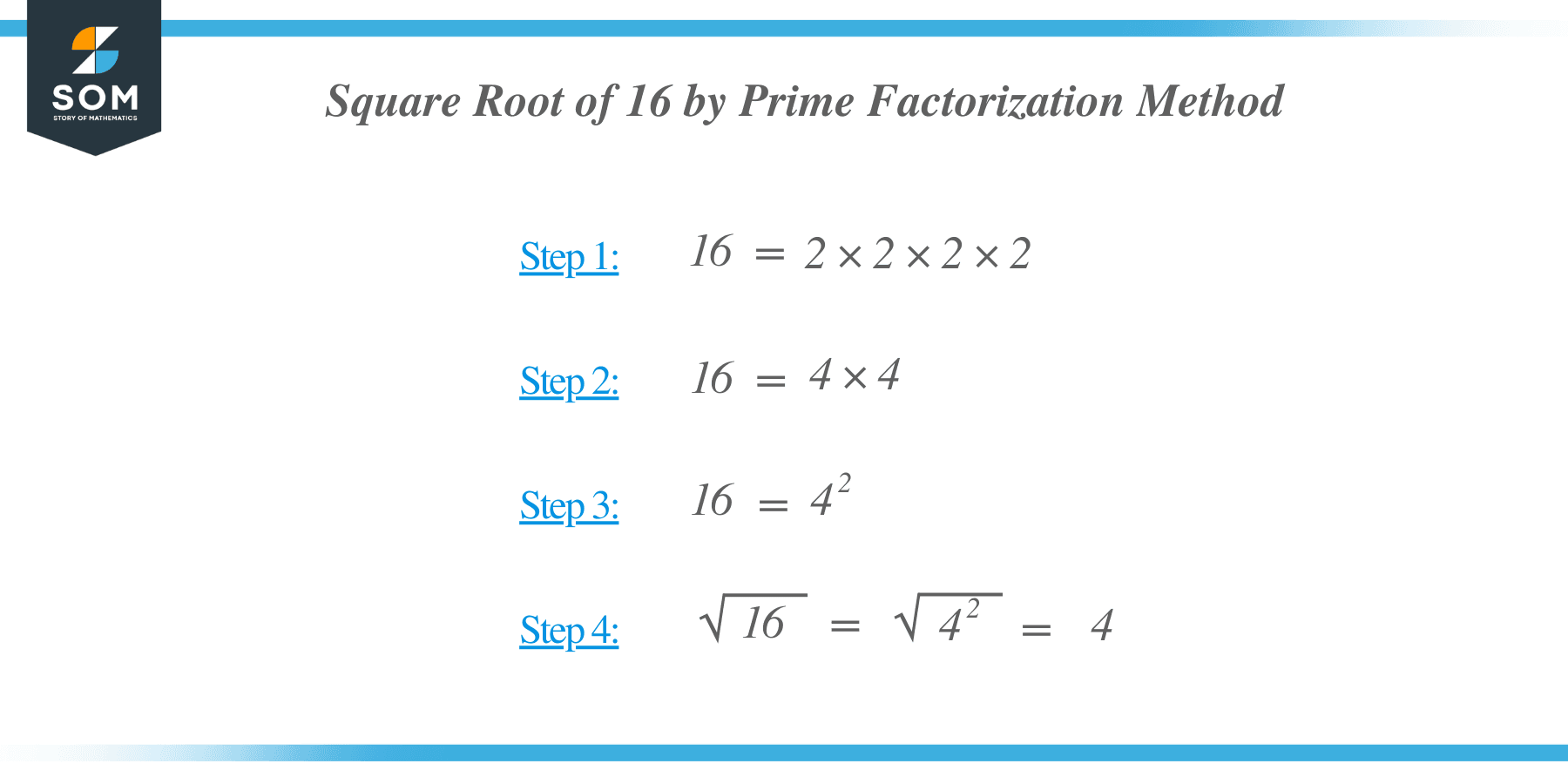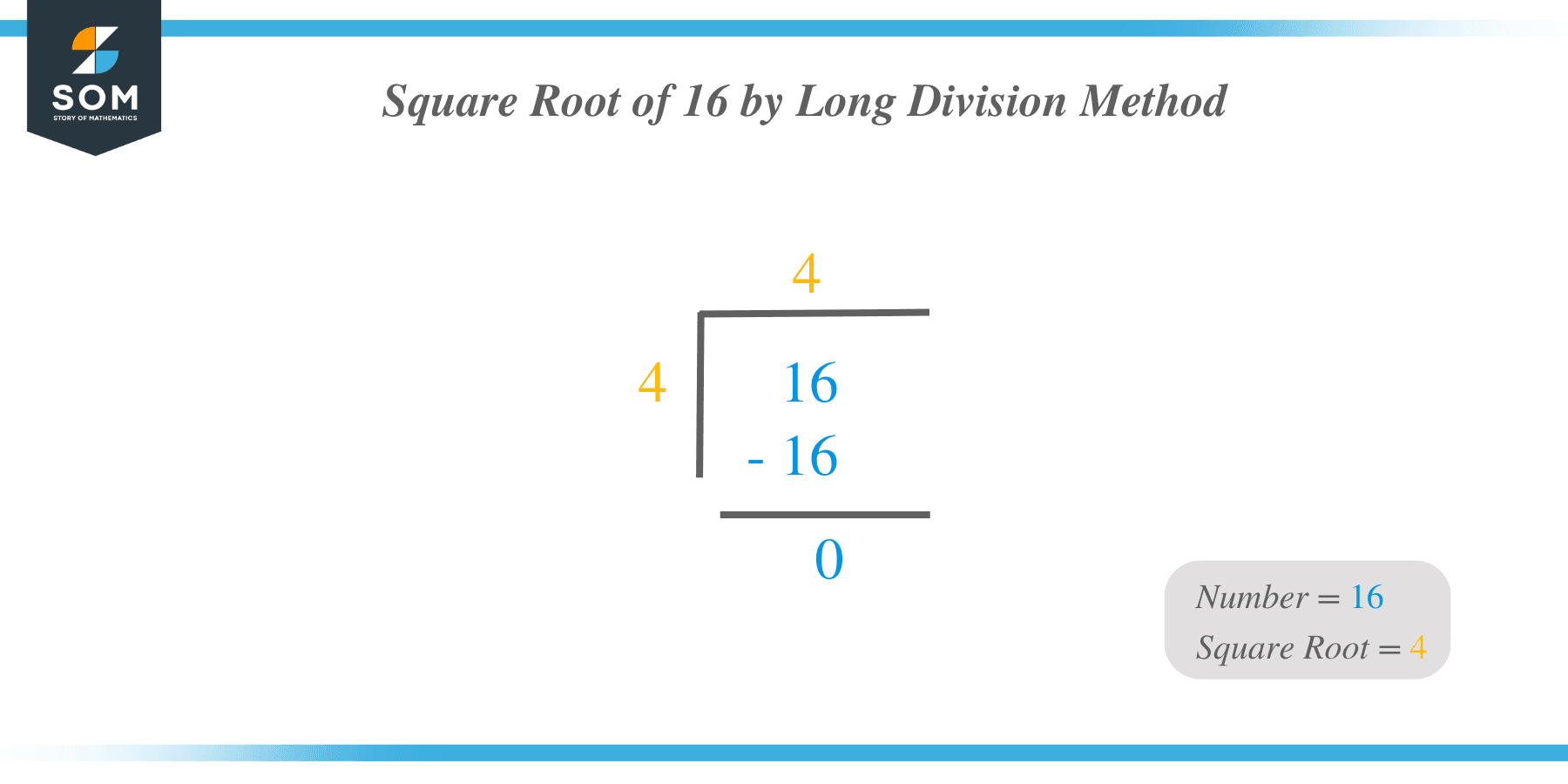Square Root Of 16
Square Root of 16 - A Simple Explanation
Have you ever stopped to ponder a number and wondered about its basic makeup? We sometimes look at numbers and think they are just symbols, but each one has a story, a pattern it follows. Today, we're going to talk about a very specific number, 16, and what happens when you try to find its "root." It's a bit like asking what building block, when put together with itself, makes up the whole thing. We're getting into the idea of square roots, and it's a pretty neat concept, honestly.
You see, figuring out a square root is really just the opposite of squaring a number. When you square a number, you multiply it by itself, like 4 multiplied by 4 gives you 16. So, if you want to find the square root of 16, you're just trying to figure out what number, when multiplied by itself, will bring you back to 16. It's a fundamental idea in mathematics, and it pops up more often than you might think in various situations. It is that kind of foundational knowledge that makes other math ideas click into place, so.
This little chat will go over the basics of what a square root is, especially for the number 16. We will look at how this idea stretches out to cover different kinds of numbers, like fractions or even those tricky negative ones. It's a way to see how one simple number, 16, can open up a wider conversation about number properties and how they work. We're just going to explore the various ways this one question, "what is the square root of 16?" can lead to a few different answers, or at least different ways of thinking about it.
Table of Contents
- What is the Square Root of 16, Anyway?
- Does the Square Root of 16 Always Mean Just One Number?
- How Do We Figure Out the Square Root of 16 in Different Forms?
- What About the Square Root of 16 When It's Part of a Fraction?
- Can We Find the Square Root of a Negative 16?
- Looking at the Square Root of 16 in a Bigger Picture
- The Square Root of 16 in More Complex Math Problems
- Understanding the Square Root of 16 as a Foundational Idea
What is the Square Root of 16, Anyway?
Let's get down to what a square root truly means. When we talk about finding the square root of a number, like 16, we're really asking ourselves a simple puzzle: what number, when you multiply it by itself, will give you 16? It's a basic arithmetic idea, but it's pretty important. For instance, if you consider the number 4, and you multiply 4 by 4, what do you get? You get 16, of course. So, in plain terms, the square root of 16 is 4. It's just that simple connection between a number and what makes it up through self-multiplication, you know.
This idea of a "square" comes from geometry, too. Think of a square shape. If its sides are each 4 units long, then the space it covers, its area, would be 4 units times 4 units, which is 16 square units. So, when you're looking for the square root of 16, you're almost trying to figure out the length of one side of a square that has an area of 16. It's a neat way to picture it, and it helps make the abstract idea a little more concrete. We've gone over this idea a bit in our lessons, so you might recall it.
The process of finding a square root is, in a way, the reverse of squaring a number. Squaring is like building up from a single number to a larger one by multiplying it by itself. Finding the square root is like taking that larger number and breaking it back down to its original, self-multiplied component. It's a bit like undoing what was done, and it's a very common operation in math. So, when someone asks for the square root of 16, they're looking for that special number that, when it shakes hands with itself, makes 16 appear.
Does the Square Root of 16 Always Mean Just One Number?
This is where things get a little more interesting, actually. While we just established that 4 times 4 equals 16, making 4 a square root of 16, there's another side to the story. Think about negative numbers. What happens if you multiply a negative number by itself? For example, if you take -4 and multiply it by -4, you still get a positive 16, don't you? That's because a negative number multiplied by another negative number always results in a positive one. So, in a sense, -4 is also a square root of 16.
So, what this means is that every positive number, like our friend 16, actually has two square roots. There's the positive one, which is 4, and there's the negative one, which is -4. When people ask for "the" square root, they typically mean the positive one, sometimes called the principal square root. But it's good to keep in mind that the other one exists, too. This distinction is quite important in some areas of math, especially when you're solving certain kinds of equations. It's a piece of information that makes our understanding of the square root of 16 a bit fuller.
This idea of having both a positive and a negative possibility for the square root of 16 is a key point. It shows us that numbers can have multiple relationships and that our initial thought might only cover part of the picture. It's a simple concept, really, but it adds a layer of depth to what might seem like a straightforward arithmetic question. So, when you think of the square root of 16, remember it's not just 4; it's also -4, which is pretty neat.
How Do We Figure Out the Square Root of 16 in Different Forms?
The number 16 doesn't always show up by itself, all neat and tidy. Sometimes, it's part of a bigger expression, or it might be sitting inside a fraction. Knowing how to handle the square root of 16 in these different setups is quite useful. It's not just about knowing that 4 times 4 makes 16; it's about applying that knowledge when the numbers are presented in slightly different ways. This is where our basic understanding gets stretched a little, and we learn to apply it more broadly.
For instance, what if you have an expression like 16 + 64 + 64, and you need to find the square root of the whole thing? The first step is to just add up all the numbers inside that square root symbol. So, 16 plus 64 plus 64 gives you 144. Once you have that total, then you can look for the square root of that sum. In this case, you'd be looking for the square root of 144, which is 12, since 12 multiplied by 12 is 144. It’s a very common step, you know, to simplify what's inside first.
This approach helps break down what might look like a complicated problem into smaller, more manageable parts. It’s about doing the operations in the right order. So, if you see the square root of a group of numbers, remember to combine them first, then find the root of that combined total. It's a pretty good rule of thumb for these kinds of calculations, and it keeps things clear.
What About the Square Root of 16 When It's Part of a Fraction?
Sometimes, you might see the number 16 as part of a fraction, and you're asked to find the square root of that whole fraction. For example, consider the fraction 16/81. How do you find the square root of something like that? It's actually simpler than it might seem, in some respects. The trick is to take the square root of the top number, which is called the numerator, and the square root of the bottom number, which is called the denominator, separately.
So, for 16/81, you would find the square root of 16, which we know is 4. Then, you find the square root of 81, which is 9, because 9 multiplied by 9 gives you 81. Once you have those two individual square roots, you just put them back together as a fraction. So, the square root of 16/81 would be 4/9. It's a neat little shortcut that makes these problems quite easy to handle.
Let's look at another example, like the square root of 121/16. Using the same idea, you find the square root of 121, which is 11. Then, you find the square root of 16, which is 4. So, the square root of 121/16 turns out to be 11/4. This method works for any fraction where both the top and bottom numbers have clear square roots. It's a pretty straightforward way to handle fractions under the square root sign, really.
This approach means you don't have to worry about complex fraction operations first. You can just break it down into two simpler square root problems. It's a very handy property of square roots that simplifies things considerably when dealing with fractional numbers. This helps keep things organized and makes the square root of 16, even when part of a fraction, quite approachable.
Can We Find the Square Root of a Negative 16?
Now, this is where things get a little bit different, and we step into a slightly more abstract part of mathematics. What if you're asked to find the square root of a negative number, like -16? If you try to think of a number that, when multiplied by itself, gives you a negative result, you'll quickly find that it's not possible with the regular numbers we use every day. A positive number multiplied by itself is positive, and a negative number multiplied by itself is also positive. So, how do we deal with the square root of -16?
This is where a special concept called "imaginary numbers" comes into play. To handle the square root of a negative number, mathematicians came up with something called the imaginary unit, which is represented by the letter 'i'. This 'i' is defined as the square root of -1. So, if you have -16, you can think of it as 16 multiplied by -1.
Once you rewrite -16 as 16 multiplied by -1, you can then take the square root of each part separately. We know the square root of 16 is 4. And the square root of -1 is 'i'. So, the square root of -16 becomes 4i. This 'i' is just a symbol that lets us work with the square roots of negative numbers, even though they don't exist on the standard number line. It's a pretty clever way to expand what we can do with numbers.
So, when you see the square root of a negative 16, you're not looking for a regular number. You're looking for what's called a complex number, which involves this imaginary unit 'i'. It's a way of making sure that every number, positive or negative, has a square root, even if we have to invent a new kind of number to describe it. It just shows how math adapts to new challenges, you know.
Looking at the Square Root of 16 in a Bigger Picture
Thinking about the square root of 16 isn't just an isolated math problem. It's a building block for lots of other mathematical ideas. The principles we've talked about, like positive and negative roots, or how to handle roots of fractions and negative numbers, apply to many other situations beyond just the number 16. It's a very fundamental concept that helps us understand how numbers behave and how we can work with them in different contexts.
The process of finding a number that, when multiplied by itself, gives you a specific result, is a core skill in algebra and geometry. Whether you're calculating areas, distances, or even dealing with more abstract equations, the idea of a square root, and particularly what we've learned from the square root of 16, comes up repeatedly. It's like learning a basic tool that you can then use for many different projects.
So, while our focus has been on 16, the lessons learned here are quite broad. They help lay the groundwork for a deeper appreciation of how numbers are structured and how mathematical operations relate to each other. It's a stepping stone, really, to more advanced mathematical thinking, and it all starts with simple questions like, "what is the square root of 16?"
The Square Root of 16 in More Complex Math Problems
Sometimes, the square root of 16 doesn't appear in a simple, direct question. It might be hidden inside a larger math problem, or it might be a small part of a multi-step calculation. For instance, if you're working on a geometry problem involving the area of a square, and you know the area is 16, then finding the side length means you're looking for the square root of 16. It's a practical application of the concept.
Or, consider equations in algebra. You might have an equation like x times x equals 16. To solve for 'x', you would need to find the square root of 16. This shows how knowing the basic fact that the square root of 16 is 4 (or -4) helps you solve real mathematical puzzles. It's not just a theoretical idea; it's a tool for getting answers.
Even in more advanced topics, like physics or engineering, you might encounter situations where you need to undo a squaring operation, and that's exactly what finding a square root does. So, the square root of 16 serves as a very clear and simple example of a principle that has wide-ranging uses. It just goes to show how often this idea pops up.
Understanding the Square Root of 16 as a Foundational Idea
The square root of 16 is a wonderful starting point for understanding square roots in general. It's a nice, whole number that makes the concept easy to grasp. From this simple example, we can then stretch our thinking to include fractions, negative numbers, and more complex expressions. It’s a bit like learning to walk before you can run; the simple cases help build the confidence and understanding for the harder ones.
This idea is so basic that it forms part of the very core of how we deal with numbers. It teaches us about inverse operations – how one action can undo another. Squaring a number and taking its square root are perfect examples of this. They are like two sides of the same coin, always connected. So, when you think about the square root of 16, you're really touching upon a very basic and powerful mathematical truth.
Ultimately, the journey through the square root of 16, from its simple definition to its more complex forms, helps us appreciate the order and logic within mathematics. It shows how even a straightforward question can lead to a deeper conversation about numbers and their relationships. It’s a pretty cool thing to think about, really, how much we can learn from just one number.

How To Find 16 Square Root: Detailed Explanation - The Story of

How To Find 16 Square Root: Detailed Explanation - The Story of

How To Find 16 Square Root: Detailed Explanation - The Story of